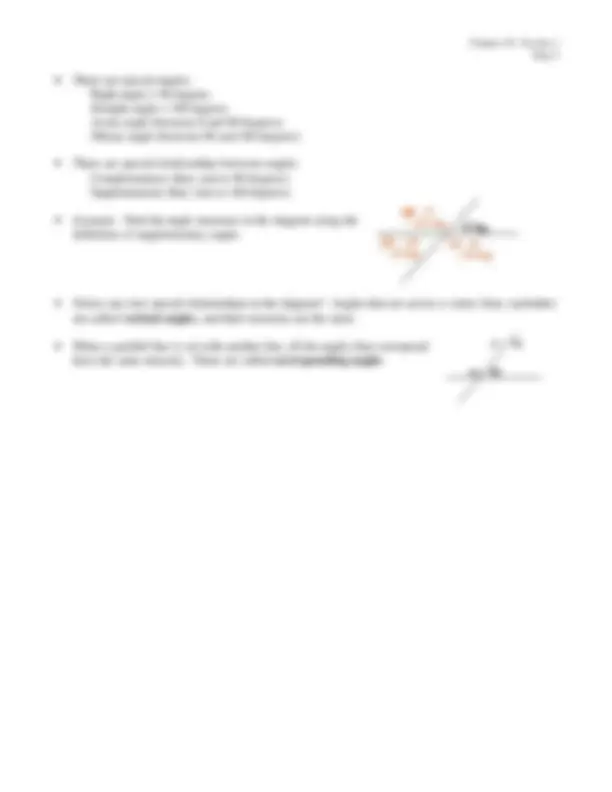



Study with the several resources on Docsity

Earn points by helping other students or get them with a premium plan


Prepare for your exams
Study with the several resources on Docsity

Earn points to download
Earn points by helping other students or get them with a premium plan
Community
Ask the community for help and clear up your study doubts
Discover the best universities in your country according to Docsity users
Free resources
Download our free guides on studying techniques, anxiety management strategies, and thesis advice from Docsity tutors
Material Type: Notes; Class: Fundamentals of College Mathematics; Subject: Mathematics; University: University of Nevada - Las Vegas; Term: Unknown 1989;
Typology: Study notes
1 / 2

This page cannot be seen from the preview
Don't miss anything!


Chapter 10. Section 1 Page 1
Homework (pg 513) 1-2, 5-
suur suur ).
uuur suuu , note the initial point has no arrow above it). A line segment is just the portion of the line between two points known as endpoints. It is expressed without arrowheads (line segment AB or BA ).
Angles are named several ways. You can name the angle with three points (the vertex B and one point on each ray, A&C) as R ABC or ∠ ABC or S ABC. Or you can just use the vertex as R B or ∠ B or S B. Sometimes there is a greek letter inside the angle (between initial and terminal sides) and you can use that letter R β or ∠ β or S β
Chapter 10. Section 1 Page 2